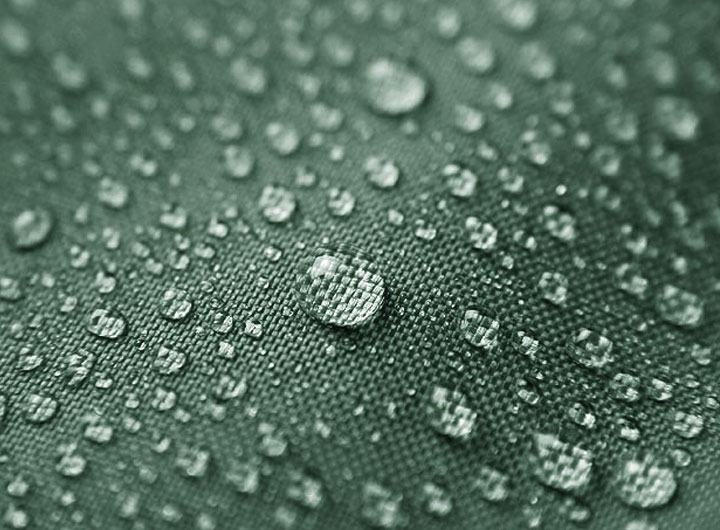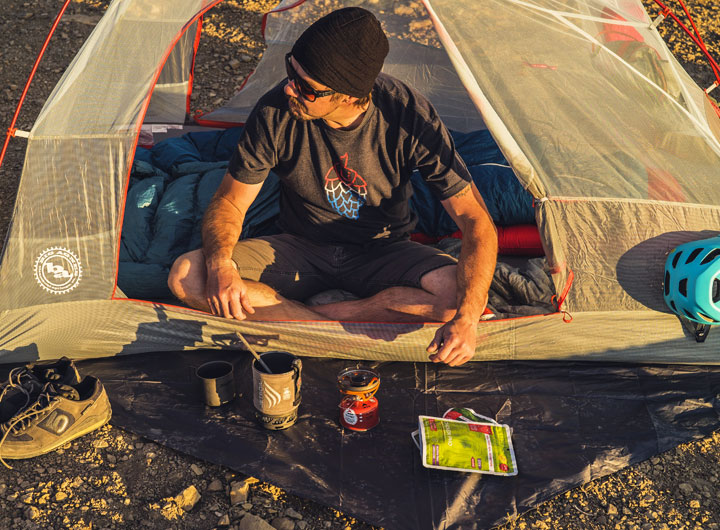Knowledge Base - Are Tent Footprints Worth It?
Feb 16, 2021
Are Tent Footprints Worth It?
Looking at the price of a footprint that goes with the lightweight tent you've just ordered can bring tears to your eyes. Is it just a money spinner for the brand or do you actually need it and if you do why doesn't it come with the tent in the first place? We've listed some of the reasons why you might want to get the footprint for your tent and some reasons why you might not.

1. Extra Protection
Lightweight tents these days can feel like they've been made out of paper. The fabric is thin to make them lighter and easier to carry but this also has the unintended consequence of making them more prone to becoming damaged. When you're setting up camp you should be looking at your pitch and checking for sharp stones, sticks and other debris that firstly might cause you to have an uncomfortable night's sleep and in the worst case could also damage your tent floor.
Lightweight tent manufacturers usually use a fabric with a higher denier for their tent floors, they know they can get away with a lower denier fabric, therefore lighter, for the flysheet as this doesn't get the abuse that a tent floor would experience. The Denier figure can be used to denote the toughness of a tent fabric.
You can therefore double up on the toughness of your tent floor with a footprint. If you know you will be camping on rocky or stony ground we would suggest getting a footprint for your lightweight tent.
2. More Waterproofing
Tents already have a waterproof floor, on lightweight tents this is usually has a Hydrostatic Head rating of around 3-5000mm and is built into the inner tent.
A footprint that is designed specifically for and made by the same manufacturer as your tent will have the same properties as your tent floor. It should have at least the same, if not higher, Hydrostatic Head rating. This means that you can effectively double the waterproofness of your tent floor with a footprint.
Hydrostatic head is basically a measure of the pressure that a fabric can withstand before letting water through, for a tent floor then it is important to be high as you can create pressure points when using your tent from areas such as your knees if you are kneeling, your elbows, hands and even your bum. If your tent pitch is wet when you're setting up camp, having a footprint will massively help to keep the inside dry.

3. Keep Your Tent Floor Clean
Having an extra layer of fabric between you and the bottom of your tent is great for keeping your tent clean. When you pack up your tent you pack the inner tent with your flysheet, if it was a muddy pitch this could get seriously messy.
Your tent footprint will come with its own waterproof stuffsack keeping any dirt seperate in your pack. This is a real help on longer trips through wetter regions like the UK, Northern Europe & North America.
4. Protect Your Investment
We all know how much you can spend on a lightweight tent and whilst the majority of wear with a tent will come from the degradation of the fabrics from UV rays, it doesn't harm to look after the tent floor too.
A footprint will prolong the life of your tent floor, adding a valuable extra layer of protection.

5. Versatility
With some tents having the correct footprint will provide extra pitching options. This usually only applies to free-standing tents. MSR advertise the fact that their footprints can be used instead of the inner tent to cerate a minimal, lightweight set-up. They have even brought out a bathtub groundsheet for each of their tents that offers more protection than their normal footprints but still gives the open, airy feel of not using the inner tent. We carry a few brands that have this option integrated in their designs.
6. Extra Weight
One of the biggest drawbacks of taking a footprint with you on your trip is the extra weight. On average you can expect the footprint to weighs around 25% of what your tent weighs. This sounds a lot but makes a bit more sense if you think that your tent floor would account for approximately a quarter of the weight of your tent and with a footprint you are doubling up on that. The dilemma is whether 25% more weight is worth the benefits that we have already outlined. A tough choice for sure.
7. Cost
Sometimes looking at the price of a footprint can take your breath away, but you have to remember these things are made from the same high-tech fabrics that the rest of your tent is made from. It's constructed using the same sewing, waterproofing and other techniques that go into creating your tent so it will come out in line with the price of the tent, i.e. if you have a high-end tent expect to pay high-end prices for the footprint.
There are other options out there. Some manufacturers will take the most common measurements and create their own footprints which are usually cheaper. You will need to check the measurements against the size of your tent and if you are looking for alternative pitching methods as described in point number 5 you are better off sticking with the same brand footprint as your tent just to ensure it all works seamlessly.
So What's The Verdict?
In the end you have to weigh up the pros and cons of taking a footprint with you and make your own decision. If you really pushed us for an answer we would probably say save the weight, unless you know where you are going you are going to have to pitch up on slightly rocky ground. Unfortunately like most things when going ultralight, there are too many factors to give a definitive answer.
Looking at the price of a footprint that goes with the lightweight tent you've just ordered can bring tears to your eyes. Is it just a money spinner for the brand or do you actually need it and if you do why doesn't it come with the tent in the first place? We've listed some of the reasons why you might want to get the footprint for your tent and some reasons why you might not.
